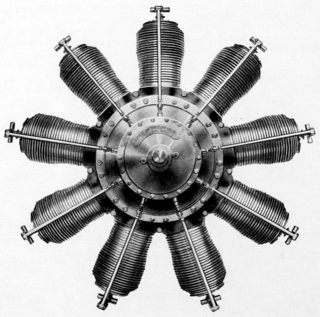
The Bleriot-SPAD S.51 was a French fighter aircraft developed in 1924 in response to a French Air Force requirement for an aircraft to replace their obsolete Nieuport-Delage NiD.29s.

The Caudron C.109 was a light utility aircraft built in France in the late 1920s.

The Lioré et Olivier H-190 was a flying boat airliner produced in France in the late 1920s. Conventional for its day, it was a single-bay biplane with un-staggered wings, its single engine mounted tractor-fashion underneath the upper wing and supported on struts in the interplane gap. Early examples had the pilot's open cockpit located aft of the wing, but this was later relocated forward of the wing.
The Farman F.150 was a 1920s French twin-engined biplane designed by Farman as a day bomber.

The Caudron C.161 was a lightweight French two-seat biplane designed by Caudron for sport or flight training use. A conventional biplane with a square fuselage powered by a 65 hp (48 kW) Salmson radial engine. It had two cockpits in tandem with dual controls in both, when not used as a trainer the controls could be removed from the rear cockpit. A variant, the C.168, with a more powerful 70 hp (52 kW) Anzani radial engine was also available.

The Caudron C.140 was a French tandem cockpit sesquiplane designed in 1928 as a combination of liaison aircraft and observer and gunnery trainer.

The Caudron C.43 was the first French five-engined aircraft, a biplane intended for passenger transport or military use and multi-engined for safety. A development of the three engined Caudron C.39, it had one tractor configuration engine in the nose and two push-pull pairs between the wings. It was capable of carrying eight passengers but was not developed.

The Caudron Type O was a French single seat air racing biplane flown in 1914.

The Caudron Types M and N were small, fast French sports monoplanes, flown 1911–13 under a wide range of engine powers. There was also a military version.

The Hydroaéroplane Caudron-Fabre, (Caudron-Fabre), was a French amphibious seaplane which competed in the 1912 Monaco event. It was one of the first true amphibians, able to take-off from water and touch down on land.

The Caudron Type L was a two-seat French pusher configuration amphibious biplane, flown around 1913 and intended for naval use.
The Caudron Type B was a 1911 development of the earliest Caudron type, the Caudron Type A, with a nacelle style fuselage and more powerful engine. Initially an equal span biplane, it was modified into a sesquiplane.
The Caudron Type K was a French floatplane with a very powerful, twenty cylinder radial engine in pusher configuration. It took part in a French seaplane competition in 1913 but was lost in a take-off accident during the competition.
The Caudron Type C was a single seat French biplane, intended for military evaluation. Two were built in 1911.

The Caudron Type D was a French pre-World War I single seat, twin-boom tractor biplane, a close but slightly smaller relative of the two seat Caudron Type C. More than a dozen were completed, one exported to the United Kingdom, where they may also have been licence built, and three to China.

The Farman HF.14 was a French two seat reconnaissance type produced by Farman Aviation Works before World War I.
The Hanriot H.34 was a basic trainer designed in France in 1924 which did not reach production. It was a parasol wing aircraft, seating two in tandem.
The Blériot 53 was a twin-engined reconnaissance biplane designed and built in France during 1915,. The Fuselage was partly covered with fabric leaving most of the rear fuselage un-covered, all-flying tailplane and rudder at the rear extremities, with a tail-skid underneath. To accommodate the nose down attitude when fully loaded, due to the centre of gravity coinciding with the mainwheels, there was a long skid extending from the forward fuselage. Two 80 hp (60 kW) Le Rhône 9C rotary engines were mounted on struts between the wings with fuel and oil tanks in the nacelles behind them. Trials were also believed to have been carried out with 100 hp (75 kW) Anzani 10 radial engines.
The Caudron Type G was a single-engined French biplane built by Caudron, prior World War I. Developments of the Caudron G saw widespread service in France, Russia and Great Britain.
The Gourdou-Leseurre GL-820 HY family of four-seat single-engined floatplanes were designed and built in France during the latter half of the 1930s by Gourdou-Leseurre. The GL-820 HY and GL-821 HY 02 were shipborne reconnaissance / obeservation aircraft, while the sole GL-821 HY was built as a torpedo carrier.















